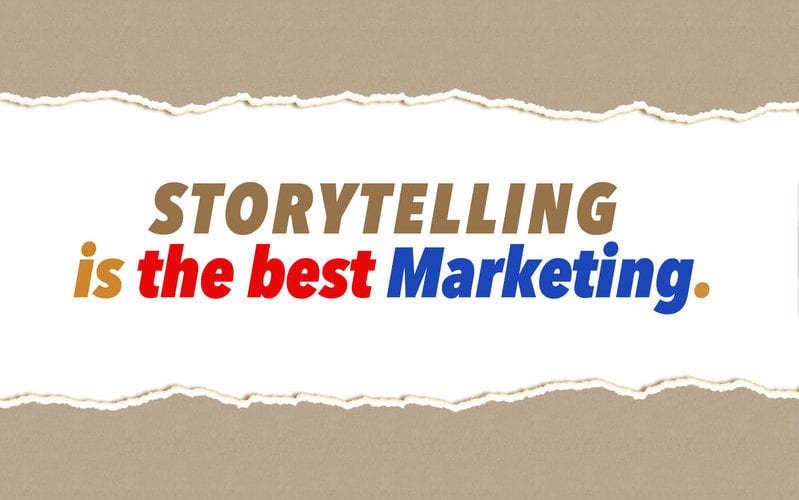The Importance of Great Storytelling In Your Web Design

Another in our “Great Articles You may have missed” series. In this article, John Jantsch reminds us that no website can be complete without great storytelling.
Your Website must tell a story
Your website is the hub of your online presence – period. (Well, maybe that’s not exactly true from you right now, but it must be!)
As such, it has to do some heavy lifting and that heavy lifting must extend far beyond the interactive brochure still built today by many business owners.
Your website must tell a story. A story must be engaging and there must be a hero, a problem, a quest, a call to arms, and a promise of a happy ending.
The trouble with most sites, however, stems to some degree from how the web design industry is viewed.
A business creates a great product or service, develops the processes for marketing said product or service and then turns to a designer to create a gorgeous set of web pages to showcase it.
At some point, they determine they are going to need lots of pretty words to go with that awesome design, and then eventually they will need someone to “SEO it all.”
Of course, today the path described above is a recipe for disaster and waste.
The purpose of your site
As the digital hub for your business, your website must be able to attract the right prospect, as well as build trust, provide information, offer a guided trial experience, convert, and nurture and do so without friction or confusion.
Your must build your website with a narrowly defined ideal customer, deep knowledge of their challenges and pains, and instant delivery of a strong message of differentiation. In other words, your website is a study in marketing strategy and the voice of your online presence.
It must make people feel something quickly, it must draw them into their story, it must help visitors realize quickly that you get them, and that you have what it takes to change their current reality.
This is a process, not a webpage!
Guiding the journey through storytelling
The buyer holds the cards today and expects to find whatever they are looking for online. They research, read, shop, bookmark, subscribe, revisit, compare, rate and review as standard markers along the buying process.
Websites today don’t create demand, they organize behavior and this requires strategy, storytelling, research, search engine optimization, intention, AND a design that facilitates what people expect from the sites they visit.
A storytelling home page might include:
- A message that grabs the reader right where it hurts (strategy message, SEO, trust)
- Trust markers in the form of testimonials (trust)
- A story about someone who was helped (proof, education)
- A scannable description or two about products and services (SEO, education)
- A story about the person and purpose behind the brand (trust, content)
- More trust markers (more trust and proof)
- A picture of what it could be like for the reader (content, aspiration, SEO)
- Several compelling calls to act (trial, trust, nurture)
Here’s a good example of a site that practices this approach
Great web design today supports; it does not dominate.
Conversion matters
Every interaction with your site is a conversion of some sort. Guiding and stimulating the behavior of the visitor is the objective.
When a first-time visitor comes to your site, your goal is to convince them to come back. That’s a conversion. When they come back your goal is to get them to stay and read some more. That’s another conversion. When they stick around your goal is to interest them in specific information that educates – that’s also a conversion. When they start consuming your eBooks, newsletters and webinars, your goal is the get them to tell you about their needs and challenges. You get the picture – that’s another conversion.
The point is, a conversion is much more than a purchase. It’s a set of micro-commitments that lead to a profitable purchase.And your site must light the path at every stage.
This is perhaps the trickiest part, as every visitor is different.
They have a different story and have different knowledge about their problem and your solution. They are often at different points in the journey and they certainly have their own way of making purchase decisions.
Conversion is about helping them make the choice that seems right for them, not about forcing then through a funnel.
Measuring every activity, click, hover, page visit, and even time on site, is the only way to start to understand what’s working and not working. It’s the only way to personalize the journey based on what you learn. True conversion nuts test and can tell you what elements of their contact us form are causing friction.
You don’t have to go that level, but heck, understanding what people who respond to your Facebook Ads do when they hit your site might be an awesome first step.
SEO at the start
Great web design starts with keyword research.
Keyword research, long the workhorse of the SEO pro, is an invaluable tool when it comes to developing strategy. Keyword research not only helps you determine popular search terms, it helps you better understand your ideal client, get a deeper grasp on their problems and intentions, and reveals clues to how they find, research, and source products and services like yours.
This knowledge allows you to create the right structure for your site before you ever start choosing colors and fonts.
Understanding the story structure of your home page and subsequent main pages is how you build and use your website to attract the right clients!
Content at the heart
In the end, your website is a container for your content, pure and simple. Nice packaging helps a visitor find and consume your content, but useful content is what drives the online machine.
Of course, content for content sake isn’t what I’m referring to here. Your content must be designed with intent. You must have content that helps create awareness, content that builds trust, content that educates, content the converts and even content to stimulate referrals.
By building a website and subsequent content around the story your prospect is telling themselves you also create context and that’s the key winning conversion with your content.
Hire a storyteller
You can no longer afford to view your website as a design only adventure. Your web hub must be built with your overall marketing strategy in mind and for my money, that starts by engaging a marketing professional who begins with strategy and who can turn your strategy into a story and who can make your content the voice of strategy.
If you want to talk to me about this idea – or if you have some thoughts to add, please leave a comment below – I want to talk to a storyteller.
 This article was originally titled “Why Your Website Needs a Storyteller Instead of a Designer“, and was published LinkedIn. It is curated here with permission.
This article was originally titled “Why Your Website Needs a Storyteller Instead of a Designer“, and was published LinkedIn. It is curated here with permission.
John Jantsch is a Small business marketing consultant, speaker and author of Duct Tape Marketing, Duct Tape Selling, The Referral Engine and The Commitment Engine. Click here to see his blog
Image: Copyright: ‘http://www.123rf.com/profile_sukanda26‘ / 123RF Stock Photo
Sign Up For Our Mailing List
To receive more in-depth articles, videos and Infographics in your inbox, please sign up below

